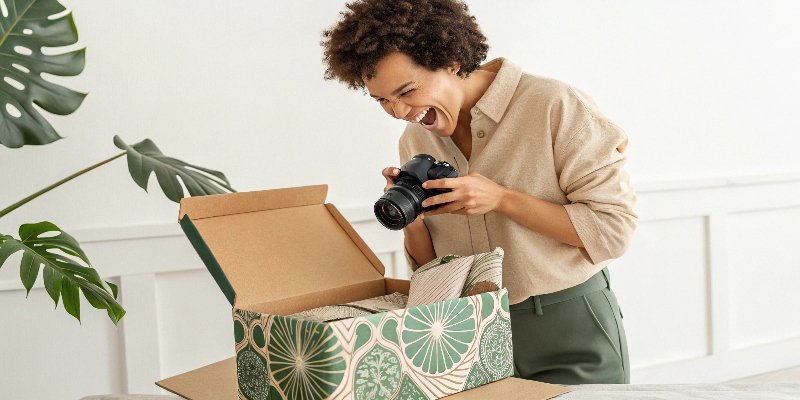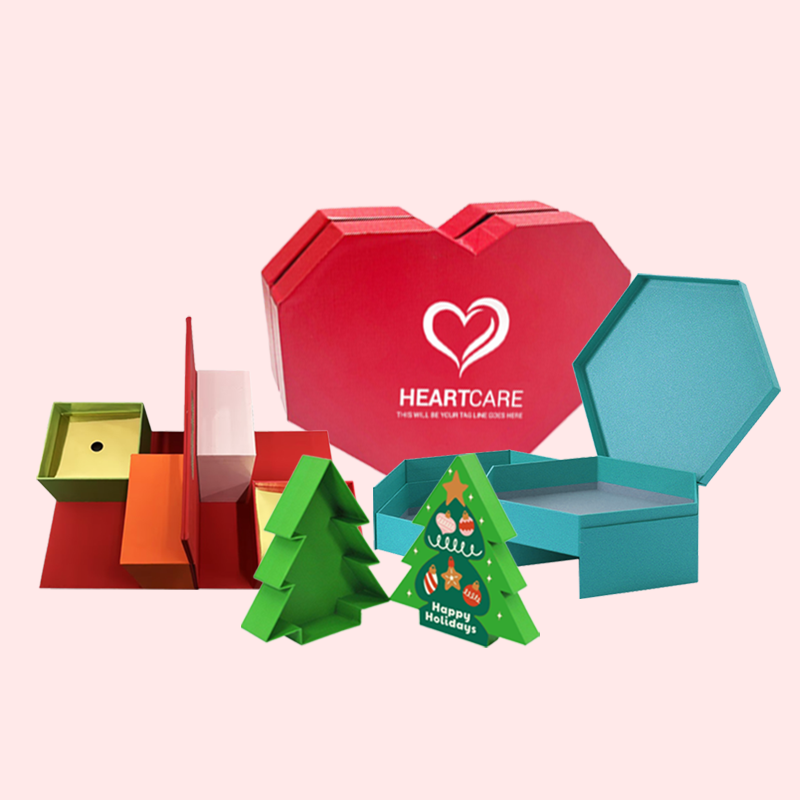Brands struggle to make luxury packaging feel truly special. This failure means missed customer connections and lost value. The secret is designing an immersive experience, not just a box.
Companies meet customer needs by creating a multi-sensory unboxing experience. This means using high-quality materials, thoughtful structural design, and brand storytelling. The packaging should feel exclusive, valuable, and perfectly aligned with the high-end product inside, making the customer feel special.

The right packaging does more than just hold a product. It speaks to the customer and tells a story. Over my 16 years in this industry, I've seen firsthand how thoughtful design can turn a simple purchase into a memorable event. But where do you start? We found that it begins with a deep understanding of what luxury means to a customer, not just what it means to the brand. It’s about bridging that gap. Let's break down how to do that.
What is the most important factor to consider when designing a package for a luxury product?
Pinpointing the single most important design factor is tough. Get it wrong, and your beautiful box feels empty. The most vital factor is the package’s alignment with brand identity.
The most important factor is brand storytelling. The packaging must instantly communicate the brand's identity, values, and promise of quality. It's not just about materials or colors, but how those elements work together to tell a cohesive story that resonates with your customer's expectations.

While many elements are important, brand storytelling1 is the foundation. It's the core idea that holds everything else together. I remember working with a client who wanted to use very modern, flashy materials for a brand that was all about tradition and craftsmanship. It just didn't work. The story was wrong. To get it right, you need to think about several things that tell this story.
Materials as a Messenger
The materials you choose say a lot about your brand. A heavy, textured paper stock suggests permanence and quality. A sleek, smooth finish might communicate modernity and sophistication. We once used a raw, recycled paper for an eco-conscious brand. The material itself told the brand's story before a word was read. The physical feel of the box is the first hint of the product's quality inside.
The Unboxing Ritual
How a package opens is part of the narrative. A simple lid is just a box. But a magnetic closure that clicks shut, or a ribbon tab that invites a slow reveal, creates a memorable experience. This structural design builds anticipation and makes the customer feel like they are unwrapping something truly special. It shows that the brand cares about every single detail of their journey.
How does packaging design2 influence consumers?
Some see packaging as just a protective shell. This viewpoint misses its huge power to influence a buyer. Packaging is the first handshake, shaping perception before the product is even touched.
Packaging influences consumers by creating a perceived value3. High-quality packaging suggests a high-quality product inside. It sets expectations, triggers emotional responses, and can be the deciding factor at the point of sale. It makes the product feel more desirable and justifies a premium price.

Packaging is a silent salesman. It works on a psychological level to influence how a customer feels about a product. I learned early in my career that people often judge the quality of the product by the quality of the box. A flimsy box suggests a cheap product, no matter how great it actually is. Packaging works its magic in a few key ways. It connects with our senses and emotions to build a bridge between the customer and the brand. It’s not just about looks; it's about making a subconscious promise of quality and satisfaction.
| Psychological Trigger | How Packaging Achieves It | Consumer Impact |
|---|---|---|
| First Impression | Uses striking visuals, unique colors, and unusual shapes. | Grabs attention on a crowded shelf or webpage. |
| Emotional Connection | Employs tactile textures and a satisfying unboxing process. | Creates feelings of excitement and being special. |
| Perceived Quality | Uses heavy materials, fine details, and solid construction. | Suggests the product inside is valuable and well-made. |
| Brand Trust | Maintains consistent branding and clear messaging. | Builds familiarity and reassures the customer of their choice. |
This influence is powerful. The packaging sets the stage and tells the consumer what to expect before they have even seen the product itself.
What do customers want from luxury brands4?
Thinking luxury customers just want a good product is too simple. This view ignores the experience, which can leave them unsatisfied. They desire an entire feeling, not just an item.
Customers want more than just a product from luxury brands4; they want an experience and a sense of belonging. They seek exclusivity, exceptional quality in every detail, and brand values that align with their own identity. The purchase should make them feel special and recognized.

Over the years, I've had many conversations with brands and their end customers. It's clear that the physical product is only part of the equation. When someone buys a luxury item, they are buying a feeling. The packaging is often the first delivery of that feeling. It's about fulfilling deeper emotional needs beyond simple function. A great package validates their decision to spend more on a brand they trust and admire. It’s the brand’s first opportunity to say, “You made the right choice.”
A Feeling of Exclusivity
Luxury customers want to feel like they are part of a select group. The packaging contributes to this by being unique and hard to replicate. Limited edition packaging or personalized touches make the owner feel special. It’s not something you can just pick up anywhere. It signals status and good taste.
Proof of Quality
Customers expect perfection. The packaging must show exceptional craftsmanship. Think precise corners, perfectly aligned graphics, and materials that feel good to the touch. Any small flaw in the box can create doubt about the quality of the product inside. The packaging is the first piece of evidence that the brand delivers on its promise of quality.
Why is packaging design2 important in attracting customers5 to a product?
Your amazing product is invisible in a crowded market. If the packaging doesn't stand out, customers walk right by. Your packaging is your first and most vital tool to attract eyes.
Packaging design is crucial for attracting customers5 because it functions as the primary marketing tool at the point of sale. It grabs attention, communicates the product's purpose and identity in seconds, and differentiates it from competitors. Good design makes a product look desirable.

Think of a busy store shelf or a crowded webpage. You have only a few seconds to catch someone's eye. This is where packaging becomes your most important salesperson. I've seen lesser-known brands outsell established ones simply because their packaging was more compelling and interesting. It all comes down to cutting through the noise and making an instant connection. An effective design does more than just look good; it invites the customer to come closer and learn more.
It Differentiates You from Competitors
In a sea of similar products, unique packaging is a beacon. A different shape, a bold color, or an unusual texture can make a customer stop and look. I once worked on a project where we used a cylindrical box instead of a standard rectangular one for a perfume brand. That simple change made it the most picked-up item in its category because it broke the visual pattern.
It Communicates Information Quickly
Good design isn't just about being pretty. It has to be functional. Customers need to understand what the product is and who it's for, all in a quick glance. The packaging's visual hierarchy6—from the brand logo to the product name to key benefits—guides the customer's eye and helps them make a fast decision, making the shopping experience better.
Conclusion
Ultimately, luxury packaging isn’t just a container. It’s a strategic tool7 that tells a story, creates an unforgettable experience, and builds a deep connection with your customer.
-
Explore how brand storytelling can enhance your marketing strategy and connect with your audience. ↩
-
Understand the vital role packaging design plays in attracting customers and influencing their choices. ↩ ↩
-
Find out how effective packaging can elevate the perceived value of your products. ↩
-
Discover the unique expectations luxury customers have and how brands can meet them. ↩ ↩
-
Learn how effective packaging design can draw customers' attention in a competitive market. ↩ ↩
-
Explore how visual hierarchy in packaging can guide consumer decisions and enhance clarity. ↩
-
Learn how packaging can be leveraged as a strategic marketing tool to enhance brand storytelling. ↩






